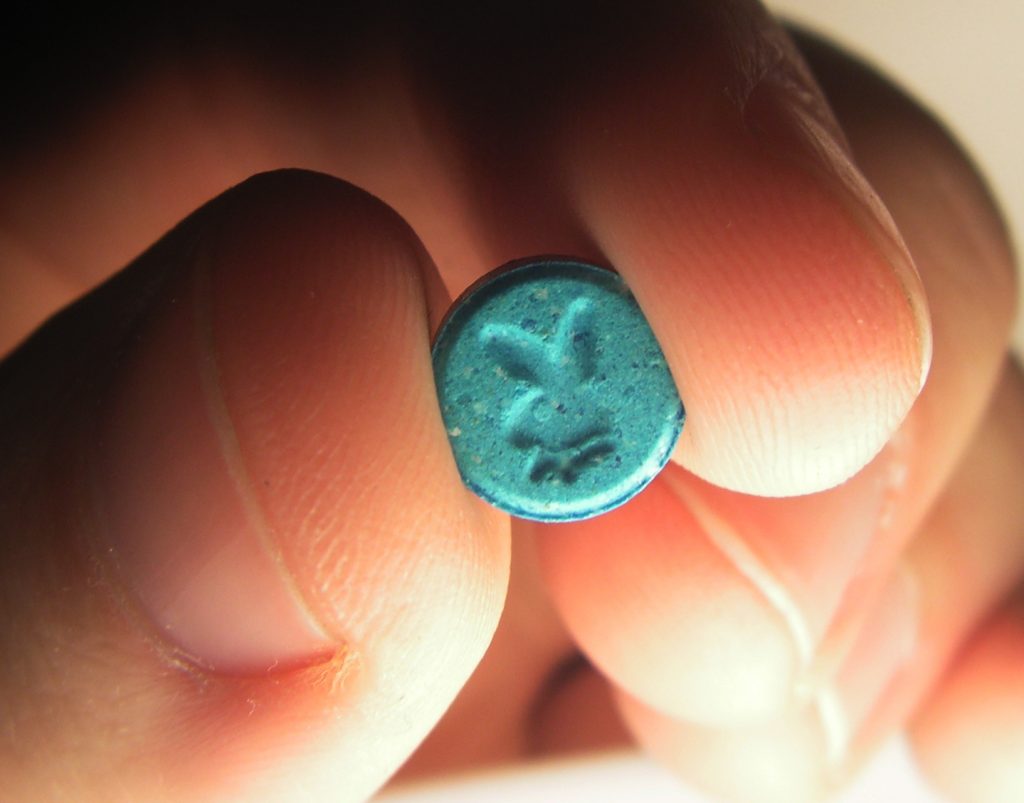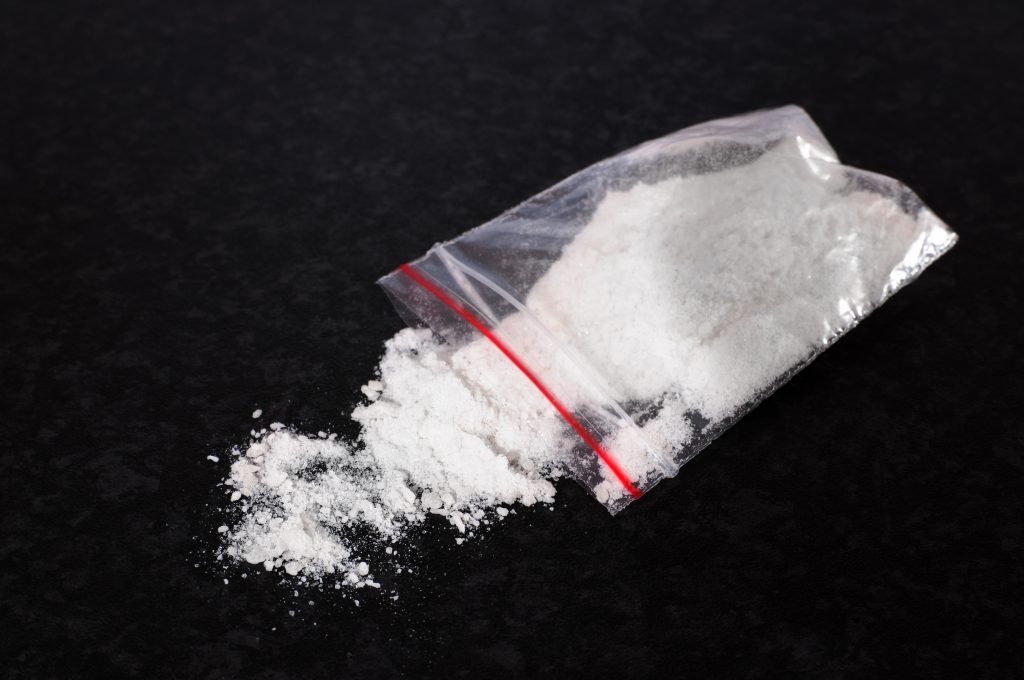Adulterants are commonplace in contemporary illicit drugs. The use of rat poison may have been an urban legend, but many of the substances that are used would be extremely toxic to a rat. Profit-driven dealers at all levels of the supply chain add substances to “bulk, dilute, complement or enhance the effects of the drugs”. Impurities can also be created unintentionally – poor manufacturing processes lead to byproducts (such as alkaloids), and poor storage techniques can lead to bacterial growth within batches.
A major supply shock (in other words a drought) leads suppliers to heavily cut their product in order to maintain a flow of supply until the next shipment arrives. Analysts have directly linked stricter enforcement efforts to more adulterated products. All drug users will remember historic bad batches; the weak bulked-down products that gunk your nose up, to the ones the were definitely not what it said on the tin. We should be thankful that services such as The Loop and WEDINOS are helping consign completely fake batches to the waste bin of history. Thanks to social media campaigns, the very dangerous Pentylone batches in circulation last summer (being entirely mis-sold as MDMA) received so much bad press they very quickly became unsellable products. This is an excellent example of harm reduction agencies using awareness to decrease the demand for dangerous products, thereby influencing the black market. Despite this progress, there remains a lack of awareness about the less obvious adulterants drug users have been taking all along, for years, often without noticing.
TEDI collected data from drug testing services across 7 European countries and found Levamisole to be the most commonly detected adulterant in cocaine samples received in 2013. Typically added at the point of production, it is a deworming agent that can reduce your white blood cell count if taken acutely. Other adulterants such as phenacetin (linked to bladder and kidney cancer), caffeine and various local anesthetics are then added by UK dealers – resulting in an average overall cocaine purity of 44% two years ago. The average purity was notably lower in Scotland.
Interestingly, one of the biggest concerns among UK harm reduction agencies at the moment is a recent rise in the purity of cocaine, after authorities clamped down on the supply of adulterants – raising their bulk price. This might sound good on paper, but when users have for years become accustomed to impure products, dosage miscalculations can easily become fatal. The result: a 90% rise in cocaine-specific hospitalisations over the last four years.
Illicit MDMA suffers from impurity issues too, and the by-product effect from poor manufacturing processes may be part of the problem. Global MDMA manufacture is concentrated in Belgium and the Netherlands. Testing programmes there have uncovered a prevalence of 4-FA, 6-APB and PMA in the samples they received from 2008 – 2013. Aside from user reports of edginess and anxiety little is known about the effect profiles of these substances – but PMA is notoriously lethal and 4-FA has been linked to brain hemorrhages. Caffeine is also sometimes used as a cut. All of these products wash up on UK shores. It is a dangerous but common misconception that purchasing MDMA in crystal form somehow guarantees its purity; it is a relatively simple process to break down MDMA crystal, add an adulterant, and recrystallise it. However, as with cocaine, the most concerning trend seen with MDMA and ecstasy pills in recent years is that they are increasing in purity and strength, with some pills recorded to contain in excess of 250-300mg of MDMA. This is an effect which many MDMA users have not adjusted to, leading to consumption of very high doses.
The purity and availability of ketamine in the UK dipped after India tightened its export restrictions and clamped down on diversion from pharmaceutical laboratories. The gap was quickly filled by clandestine laboratories in China and more recently the Netherlands, with poorer production processes, meaning more by-products. Ketamine is difficult to manufacture and these laboratories are expensive to set up. Whereas the pharmaceutical Indian import trade was mostly made up of smaller networks, setting up laboratories from scratch requires investment from larger criminal syndicates, who have muscled in on the UK ketamine market. It appears these gangs are using more adulterants to maximise their profits.
In the absence of any real legitimate data on what adulterants are being used, I went out on a limb and asked Aaron* – a dealer who cuts his product. He told me that MSG, the sweet n’ salty flavouring commonly found in chinese food, has become less popular as a cut, although it is still used. Instead, ketamine dealers in the UK are now primarily using creatine and caffeine. The scientific jury is still out on how harmful creatine (a protein crystal) is, but acute consumption may lead to kidney, liver and heart problems. It may also cause stomach pain, nausea, diarrhea, and muscle cramping. Caffeine might seem an odd choice for mixing with such a drowsy dissociative, however it intentionally keeps the user more alert, above the level of a k-hole and less inclined to sleep. As a result the user is more likely to chase highs, and stay up longer consuming more – thereby increasing demand. One is reminded of Stringer Bell in The Wire, when he admits that adultering the product only persuades users to spend more. In Aaron’s words, “Everything is touched”.
Caffeine has been used to cut heroin for decades. Rather than being a twisted marketing technique to increase demand, caffeine reportedly makes heroin easier to prepare for injection. Paracetamol is also common, small amounts of which can cause irreversible organ damage. Let us also not forget the recent circulation of heroin batches contaminated with Anthrax in Scotland. At the other end of the country, while undercover in Brighton Neil Woods found that dealers were intentionally preparing lethal ‘dirty shots’ for users who stepped out of line – hardly an ideal situation for anyone physically dependent on their supply. Brighton at the time had an extraordinarily high per capita drugs death rate. As heroin is commonly injected, this mix of adulterants, by-products and bacterial agents is especially critical to the lives of thousands of users across the UK on a daily basis.
Similarly to cocaine, the average purity of UK heroin stood at around 44% two years ago. Particularly worrying is the recent upsurge of dealers (from Latin American cartels right down to UK street-level) cutting heroin with fentanyl and fentanyl analogues. These substances are astonishingly easy to overdose on, and the US has witnessed a 540% increase in fentanyl-specific deaths over three years. Various constabularies across the UK have issued warnings about confirmed fentanyl-laced heroin batches in circulation, and the National Crime Agency is reopening a considerable number of opiate-related death enquiries; previously they had not been testing for the presence of fentanyl during autopsies. This raises very serious questions about whether drug-related death records accurately depict the true reality of adulterant-specific fatalities – and indeed whether the scale of the problem is much larger than our government is willing to admit.
What can we learn from all this? Well, perhaps more of us have coffee addictions than we realise. Secondly, polydrug use is notoriously dangerous – and many drug users are imbibing unsafe cocktails every weekend without their knowledge or consent. Adulterants continue to cause deaths that were otherwise avoidable, and that is a tragedy. At the very least, local constabularies should be obliged to release up-to-date localised data from the laboratory tests they conduct on drug seizures. This would help a wide range of drug users make informed decisions. These results are confidentially released to Accident and Emergency facilities, but wider dissemination would save lives and prevent public health crises. Charitable harm reduction agencies are currently a sticking plaster on a gaping wound, struggling to fund expensive testing equipment – which the police already have all over the country. This, alongside The Loop’s very commendable push towards drug testing facilities in city centres, would quickly make it economically unviable for dealers to produce or distribute dangerous batches.
The weird truth is, some (certainly not all) of these adulterants are less harmful than the pure product. If you were outraged to learn about the range of substances you are inadvertently consuming, maybe take a moment to reflect on the damage being caused by the ones you intended to. With this said, it is tragic that drug users are not presented with a clear choice about what they are consuming – making every new batch a needless life-or-death gamble.
*Name changed, permission to use quote granted.
Words by Josh Torrance



